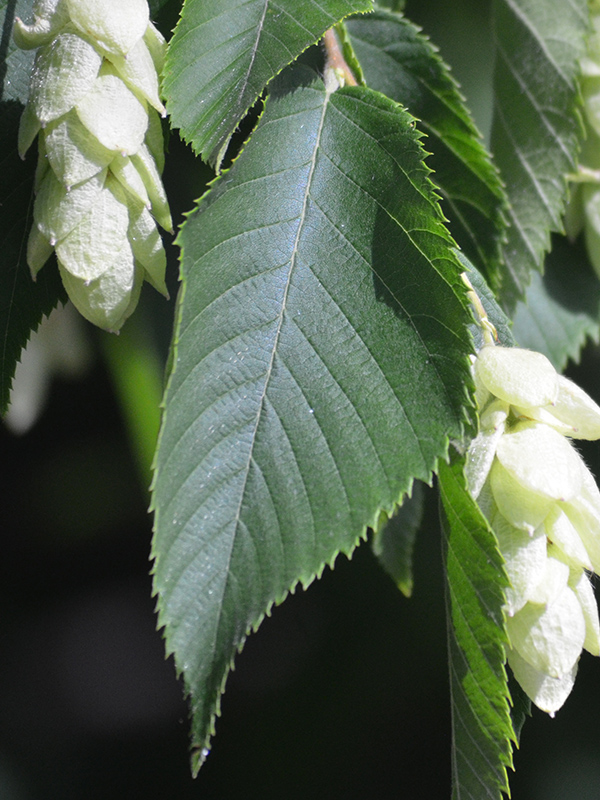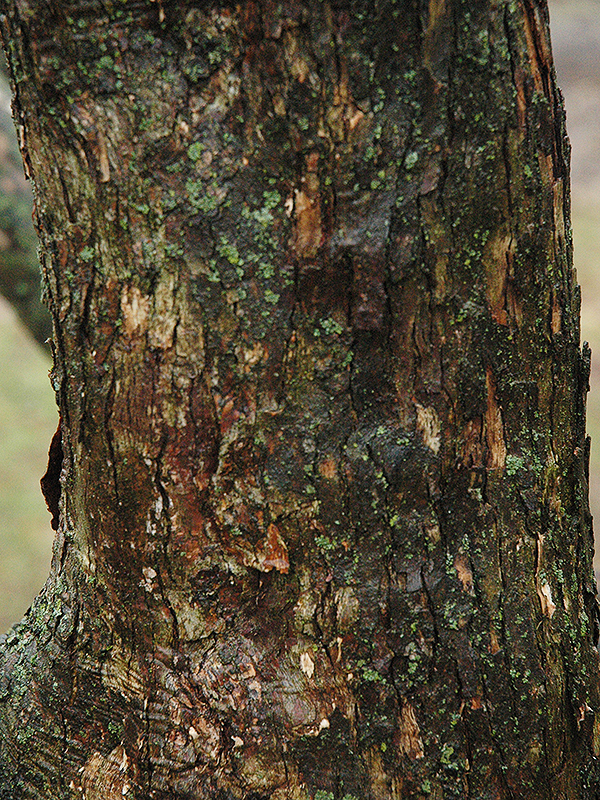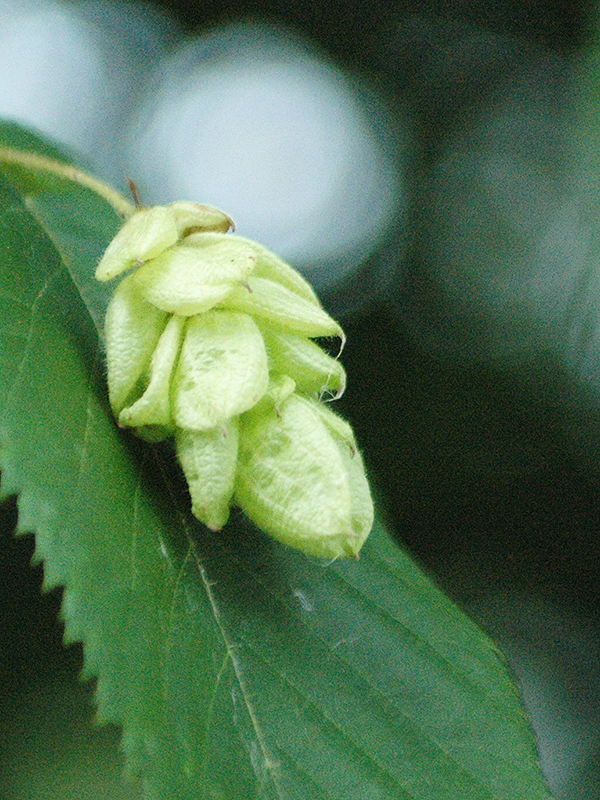
Woody > Ostrya > Ostrya virginiana > Ostrya virginiana
Ostrya virginiana
American Hophornbeam
Origin: Canada, Mexico and the United States of America.
Mike's
Opinion


"
Although not as attractive as other members of the Betulaceae family, Ostrya virginiana displays its value through uniqueness. More likely found in areas dominated by oaks rather than maple-beech forests, the hardest of hardwoods is separated from its cousins by preferred habitat as well as its uncommon fruit, resembling hops.
Michael Pascoe, NDP., ODH., CLT., MSc. (Plant Conservation)
"
| Family |
| Betulaceae |
| Genus |
| Ostrya |
| Species |
| virginiana |
| Category |
| Woody |
| Type |
| Tree (deciduous) |
| Pronunciation |
| USDA Hardiness Zone |
| 3 - 9 |
| Canadian Hardiness Zone |
| 1a |
| RHS Hardiness Zone |
| H7 - H3 |
| Temperature (°C) |
| (-37) - (-1) |
| Temperature (°F) |
| (-35) - 30 |
| Height |
| 7-12 m |
| Spread |
| 3-5 m |
Photographs
Description and Growing Information
Flowering Period
| General Description |
| A small tree which often grows under larger species. It prefers full to partial sun. Well known for having the the most dense hardwood found in North America. This species has been placed on the IUCN Red List as least concern. |
| Landscape |
| Used occasionally in cities and golf course planting, but limited in use in such areas because of its intolerance of pollution. A good choice when a unique looking, smaller sized tree is desired. |
| Cultivation |
| Ostrya virginiana was first used by North American natives to construct bows due to the strength of its wood. It was then used by pilgrims for farming equipment, levers and fence posts. This tree is less significant in modern industry and is not commonly cultivated. Highest chance of transplant success will occur in spring when the specimen is transported within a container or balled-and-burlapped and then planted into a lightly acidic, well drained soil. Pruning should done through the winter or early spring. |
| Shape |
| Rounded oval crown. |
| Growth |
| Slow |
| ID Characteristic |
| Shredded looking bark, serrated oval-lanceolate leaves forking near margin. Can be easily identified by its hop like fruit, which is similar members of the Betulaceae species. |
| Pests |
| Relatively free of insect and disease problems. It's not uncommon to discover witches broom occurring in tree crowns. |
| Habitat |
| Can be found from Prince Edward Island to Southern Manitoba south to Texas and Florida. Prefers upland forests. |
| Bark/Stem Description |
| Reddish-brown bark with large lenticels during infancy. Turns greyish and becomes shredded with age. |
| Flower/Leaf Bud Description |
| Small and narrowly pointed and covered with green or brown grooved scales. They are 2-5 mm in length. |
| Leaf Description |
| Doubly serrated simple leaf with veins forking near the margin. The pubescent oval-lanceolate blades are usually 5-13 cm in length and attached to stem by a 0.5 cm long petiole. The colour is a dark green in the summer and fading to yellow in autumn. |
| Flower Description |
| Monoecious; males form 2.5 cm catkins which are visible throughout winter and females develop with leaves. Flowering occurs anywhere between April-June depending on location. |
| Fruit Description |
| Nutlets are enclosed within a hairy, leafy sac, 4-7 cm long resembling a hop which is the reason behind the tree’s common name. The tree’s fruit attracts a wide range of birds. |
| Colour Description |
| Reddish-brown to grayish-brown bark with dark green leaves turning to yellow in the autumn. |
| Texture Description |
| Medium-fine texture. |
| Notable Specimens |
| Ostrya virginiana can be found on the Fanshawe College campus, London, Ontario , Canada, behind K building. Although not planted in ideal conditions the specimen has grown into quite an attractive tree. |
| Propagation |
| The seeds dormancy requires three months of warm stratification (around 20°C) then three-five of cold (around 3°C) to produce acceptable rates. Best results are achieved in well drained loamy soil when seed is planted 6 mm deep. |


